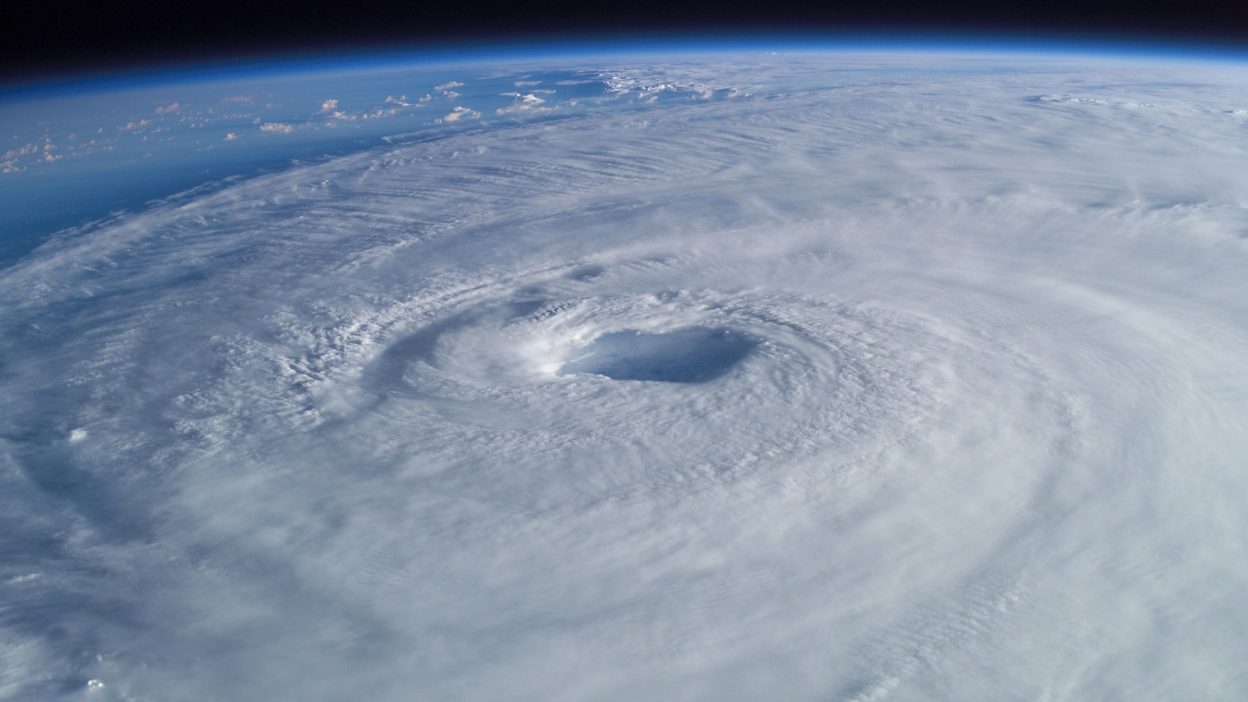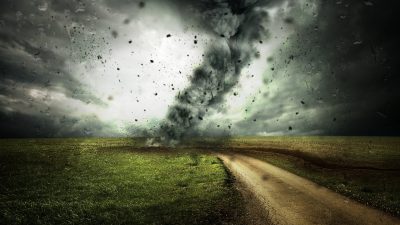A Forgotten Tragedy and Its Lasting Impact on India’s History
Introduction: Coringa Cyclone 1839 – The Forgotten Tragedy
On 25th November 1839, the port town of Coringa in what is now Andhra Pradesh, India, was devastated by one of the deadliest cyclones in history. Estimated to have caused the deaths of 20,000 to 30,000 people, it remains one of the deadliest tropical cyclones on record. As the cyclone made landfall with 200 km/h (124 mph) winds, it sent a massive storm surge crashing into the region. Coringa, a bustling maritime hub, was left in ruins, its port completely destroyed and its people scattered by the storm’s ferocity. This was not just a natural disaster but a catastrophic failure of colonial governance and disaster preparedness.
While cyclones and other storms often make the headlines today, the Coringa Cyclone is often overshadowed by later events. The human cost of this event remains staggering, with entire families wiped out and communities submerged under floodwaters. The storm’s legacy still looms in the history of Indian natural disasters, but it also serves as a chilling reminder of how the lack of foresight and response can worsen the effects of such calamities. Without the aid of modern technology and the absence of early warning systems, the people of Coringa paid a harsh price—one that would have ripple effects for generations.
The Science Behind the Storm: Unleashing Nature’s Fury on Coringa
The Coringa Cyclone, like many other deadly storms in the Bay of Bengal, was fuelled by a low-pressure system that intensified rapidly. The warm waters of the Bay of Bengal acted as a catalyst, allowing the cyclone to gather speed and strength as it moved towards the coastline. The winds, estimated at 200 km/h (124 mph), were destructive enough to level buildings, uproot trees, and destroy entire villages.
But what truly made this storm devastating was its storm surge. The surge, combined with intense rainfall, swamped the coastal areas, causing flooding of unprecedented scale. For a town like Coringa, which sat at a low elevation, the storm surge was lethal—the surge could have reached over 10 metres (33 feet). The people of Coringa had no warning, no shelter to turn to, and no means of escape. The cyclone hit swiftly, leaving a region completely unprepared and vulnerable to nature’s wrath.
The Death Toll & Human Cost: A Disaster of Epic Proportions
• Death Toll: 20,000 to 30,000 Lives Lost
The cyclone claimed thousands of lives in Coringa and surrounding areas, with estimates ranging from 20,000 to 30,000 deaths. Survivors of the storm recounted seeing bodies floating in the floodwaters for days. There was no system in place to account for the vast number of lives lost. In fact, many survivors of the disaster didn’t even have time to mourn their dead due to the overwhelming conditions.
• Complete Destruction of Coringa’s Port
Coringa was a prosperous maritime port, essential for the region’s trade and commerce. The cyclone wiped out the entire port, destroying ships and sinking the local fleet. The economy of the town came to a standstill as the infrastructure was obliterated, never to fully recover.
• Mass Graves and Unrecorded Losses
With the sheer scale of the destruction, mass graves were dug, and thousands of bodies were hastily buried. The lack of proper burial rites meant that many of the victims remained unidentified, and the death toll will never truly be known. Survivors struggled to piece together the fragments of their lives in the aftermath.
• Social Fabric Shattered
Entire families were lost, leaving survivors to pick up the pieces in a shattered society. The trauma from the event left a deep scar on the social fabric of Coringa. The community had been ravaged not just by the cyclone but by the collapse of its social structure. The loss of homes, livelihoods, and loved ones was devastating, creating a fractured, grieving population that would take years to heal.
• Economic Fallout: Collapse of a Trade Hub
The cyclone crippled the economy of Coringa. As a key maritime trade hub, the destruction of its port had far-reaching consequences. Ships that were carrying goods were lost, and warehouses full of goods were destroyed. The economic impact of the storm was not only local but also affected trade in the wider region, with imports and exports severely disrupted for years.
The British Colonial Response: A Stark Example of Neglect
When the Coringa Cyclone struck, the British colonial authorities showed a shocking lack of urgency in their response. While they prioritised the rebuilding of economic infrastructure, relief to the affected population took a back seat. The slow response from the British officials exacerbated the devastation and left survivors to fend for themselves.
Many survivors reported that the colonial government was more concerned with restoring trade routes and re-establishing the port rather than helping the displaced and grieving populations. Relief efforts were delayed and inadequate, with no early warning system in place to protect the people of Coringa. The colonial negligence during this disaster only fuelled the resentment toward British rule in India, further deepening the divide between the rulers and the ruled.
Why the Coringa Cyclone Was So Deadly
• High Vulnerability of Coastal Regions
Coringa, being located in a coastal, low-lying region, was highly susceptible to storm surges. The region’s geographical features made it a prime target for such a powerful cyclone. The lack of elevated land meant that the rising waters had nowhere to go but inland, drowning villages and cities.
• Sudden and Unpredictable Nature of the Storm
With no early warning systems, the people of Coringa were completely unprepared for the cyclone. The storm struck without notice, leaving the population with little chance of survival. There was no system in place to evacuate the vulnerable or protect them from the storm’s force.
• The Storm Surge’s Lethal Impact
The storm surge was the primary cause of death. As the cyclone approached, the surge overwhelmed the low-lying coast, sweeping away homes and ships. Floodwaters stayed for days, preventing survivors from escaping and making it nearly impossible to access relief.
• Poor Response and Lack of Infrastructure
The British colonial administration failed to set up infrastructure or provide the necessary relief efforts to help the victims of the cyclone. This lack of response led to a much higher death toll and prolonged suffering for those who managed to survive.
Global Response & Aid Efforts: A Tale of Neglect
In 1839, there was no international aid system to respond to such catastrophes. India was under British colonial rule, and the response to the Coringa Cyclone was not driven by humanitarian concerns but rather by economic recovery. The British authorities focused more on restoring trade routes and port infrastructure than on helping the affected people. Relief was delayed, and it was months before the survivors received proper assistance.
Neighbouring regions, however, did offer some help, but the scale of the disaster was so great that it was almost impossible to fully recover without the immediate and comprehensive aid systems we see in place today. Without the modern mechanisms of international aid, the aftermath of the cyclone was a slow recovery with little support for the people who had lost everything.
The Legacy of the Coringa Cyclone: A Call for Action in Today’s World
The Coringa Cyclone of 1839 remains a reminder of the devastating power of nature and the devastating consequences of human negligence. It exposed the need for early warning systems, disaster preparedness, and government accountability. But even today, the lessons from Coringa are just as relevant. As global warming intensifies and sea levels rise, communities in coastal regions are increasingly at risk from powerful cyclones. The Coringa tragedy serves as a warning: unless we act now to improve infrastructure, disaster response, and climate change mitigation, we could face more catastrophic events in the future.
Conclusion: Coringa Cyclone – A Painful Reminder of Our Fragility
The Coringa Cyclone of 1839 left a scar on history, one that reminds us how vulnerable we are in the face of nature’s fury. The death toll of 20,000 to 30,000 and the devastation it caused proved that without adequate preparedness, disasters like this can wipe out entire populations. The slow response of colonial authorities only added to the tragedy, and even now, we see how lack of foresight and action can cost countless lives. As climate change accelerates, the Coringa Cyclone should serve as a wake-up call for the world to act swiftly and prevent similar catastrophes in the future. The time to prepare is now—before it’s too late.
FAQ: Coringa Cyclone 1839
- What was the cause of the high death toll during the Coringa Cyclone?
The storm surge, combined with strong winds, caused the greatest loss of life. The flooding submerged the region, drowning thousands and destroying entire communities. - How long did it take for Coringa to recover after the cyclone?
The recovery process took years, with the port infrastructure destroyed and the local economy in ruins. It took several decades for the region to rebuild and recover from the devastation. - Was there any aid or relief provided to Coringa?
The British colonial authorities were slow to respond. Relief efforts were primarily focused on economic recovery rather than humanitarian aid, leaving many survivors without support for months. - Why was the Coringa Cyclone so devastating compared to other storms?
Its storm surge and the lack of preparation were the primary reasons for the devastation. The town’s low-lying position left it particularly vulnerable to such a severe disaster. - What is the legacy of the Coringa Cyclone today?
The Coringa Cyclone highlights the importance of disaster preparedness, early warning systems, and the need for a rapid-response infrastructure. The lessons learned are still crucial in today’s context of increasing climate change threats.
Reference:
Coringa Cyclone – [November 25, 1839] This Day in History
Coringa Cyclone – This Day in History | Testbook
Cyclones and Cholera – A Master Attendant’s Wife at Coringa
Wikipedia – 1839 Coringa cyclone
The Truth About The Deadly 1839 Coringa Cyclone
YT links:
Zach Documentary on the Coringa Cyclone
The Cyclone That WIPED a Whole City From The Map – Coringa Cyclone




